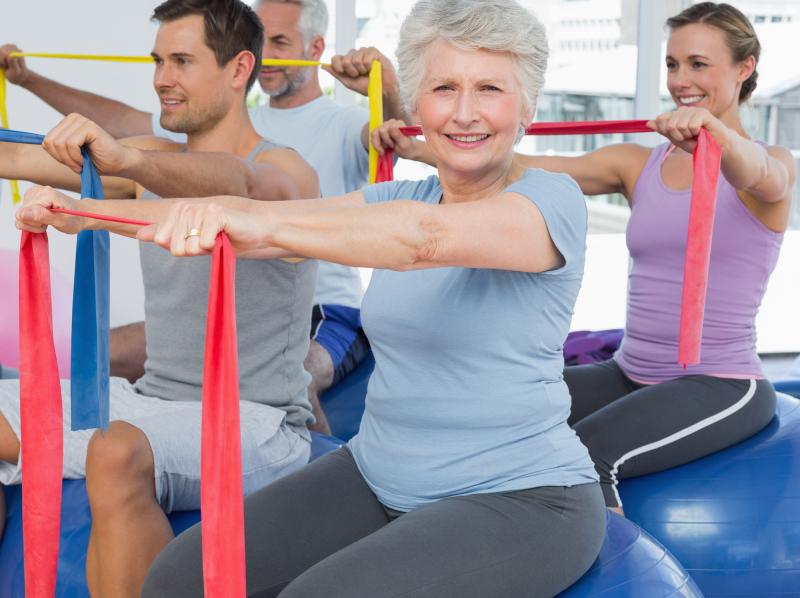
Gluteal Tendinopathy or Hip Bursitis
What is Gluteal Tendinopathy
Physiotherapy management of Hip Bursitis and Gluteal tendinopathy
Chances are if you have long standing pain on the outside of your hip, you have gluteal tendinopathy- often previously called gluteal bursitis. Commonly in ladies over 50 but not to be missed in the younger active and also male populations.
Gluteal tendinopathy is one of the most common conditions we see here at Hindmarsh and Fitzroy Physiotherapy and it's also known as Trochanteric Pain Syndrome. This debilitating condition has the potential to really affect your quality of life, earning potential and activity level.
What is it
The condition is caused when there is an increased or unaccustomed load through the gluteal tendons. Such as a new fitness program or increased walking on holidays. These tendons connect the Gluteal (Hip) muscles to the femur (thigh bone.)
You use your gluteal muscles and tendons when you take your leg to the side or turn your hip out and they help stabilise the hip and pelvis during gait.
With overuse, changes happen in the tendon collagen matrix, the tendon thickens with disorganisation of its fibres which then weaken the tendon and tears can occur.
Another structure called the Iliotibial band (ITB) runs across the greater trochanter where the gluteal tendons attach and this then adds a compression to the irritated tendons.This occurs in any position of tension - generally adduction (with the affected leg in towards the other leg). In approx. 20%, the adjacent bursae can also be thickened but it is generally not the primary injury.
Management must be directed at both helping settle the presenting pain of the tendns and addressing the reasons this happens.
How do you know if you have gluteal tendinopathy?
You will most likely have pain on the outside of your hip, but it can also extend down your leg and occasionally to the groin.
There is predominantly night pain sleeping on one or both hips, pain with walking up hills and up stairs or even walking and standing, sometimes sitting and also getting out of a chair with the first few steps being stiff.
Standing on one leg and sitting with with legs crossed or in a low lounge chair can also be problematic.
Although predominantly in women we do also see this condition in Athletes and men with excessively tight ITBs.
What do we look at
We will look at your functional tests such as standing on one leg, walking, posture, and squat.
We will also look at your pelvic position, hip and back range of movement, muscle length and strength. There are some key clinical tests that will then confirm the diagnosis. Biomechanical factors and other possible referral sources must be considered.
Treatment
Unfortunately the evidence suggests that cortisone injections don't provide long term relief, in fact cortisone injections appear to make this condition worse in the long term. This may be because with short term pain relief people do not then address the underlying issues and it reoccurs with a vengeance!
Appropriate hip strength and control exercises as well as avoiding compression of the tendons is needed to reduce the pain from the tendons. Gluteal stretches will usually aggravate this condition and should be avoided.
It's important to monitor activity levels particularly for activities such as hilly walks, stairs, or other activities that increase the tendon pain. Activity modification is an important part of any management program.
Education, advice, decompression and a progressive monitored tensile loading regime will improve the conditioning of the tendon complex and its ability to sustain load and exercise.
Further functional retraining, such as double- and single-leg weight-bearing tasks with the correct leg position will then help to transfer the strength gains into functional improvement.
How long does it take?
This depends on many factors, including how long the pain has been there, adherence to the exercises and advice, age and activity levels. Early progress is often within a few weeks but longer term can take months to settle.
Unfortunately recurrence is common as the early management and rehabilitation can produce marked pain relief. But without progressing the strength and functional exercises the contributing factors have not been brought under control and the pain comes back.
If you would like to speak with one of our physiotherapists regarding any of your hip pain concerns please get in touch by emailing us info@hindmarshphysio.com.au or info@fitzroyphysio.com.au or call 83462000 and 83422233.
In addition to our Website Blogs please visit us on Facebook or subscribe to our monthly newsletter for free resources, E-book, pdfs and advice only available to our community.
Physiotherapy Clinic UpdateBlog Archive
Contact Us
Hindmarsh Physiotherapy & Sports Injury Clinic
281 Port Road
HINDMARSH SA 5007
Appointments
